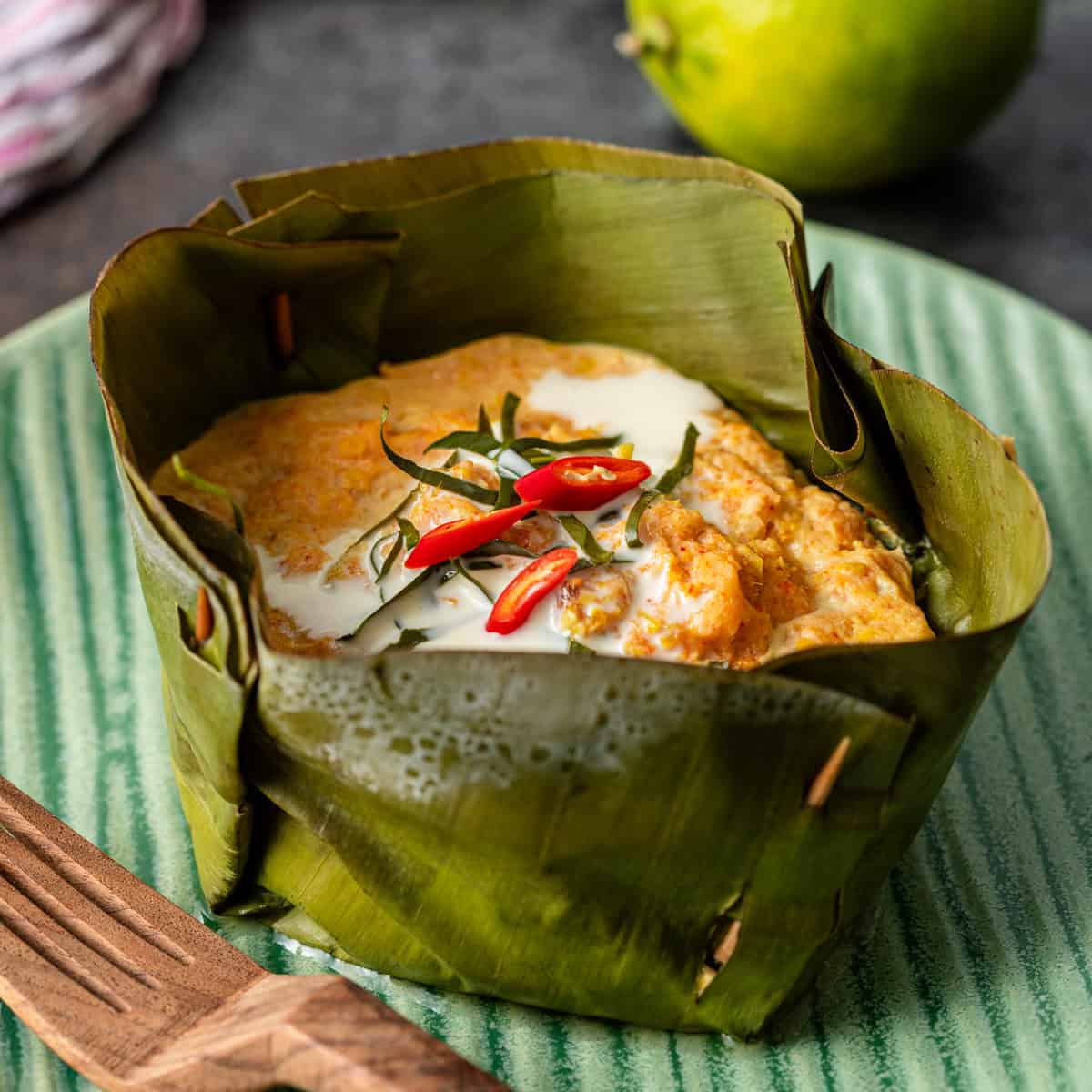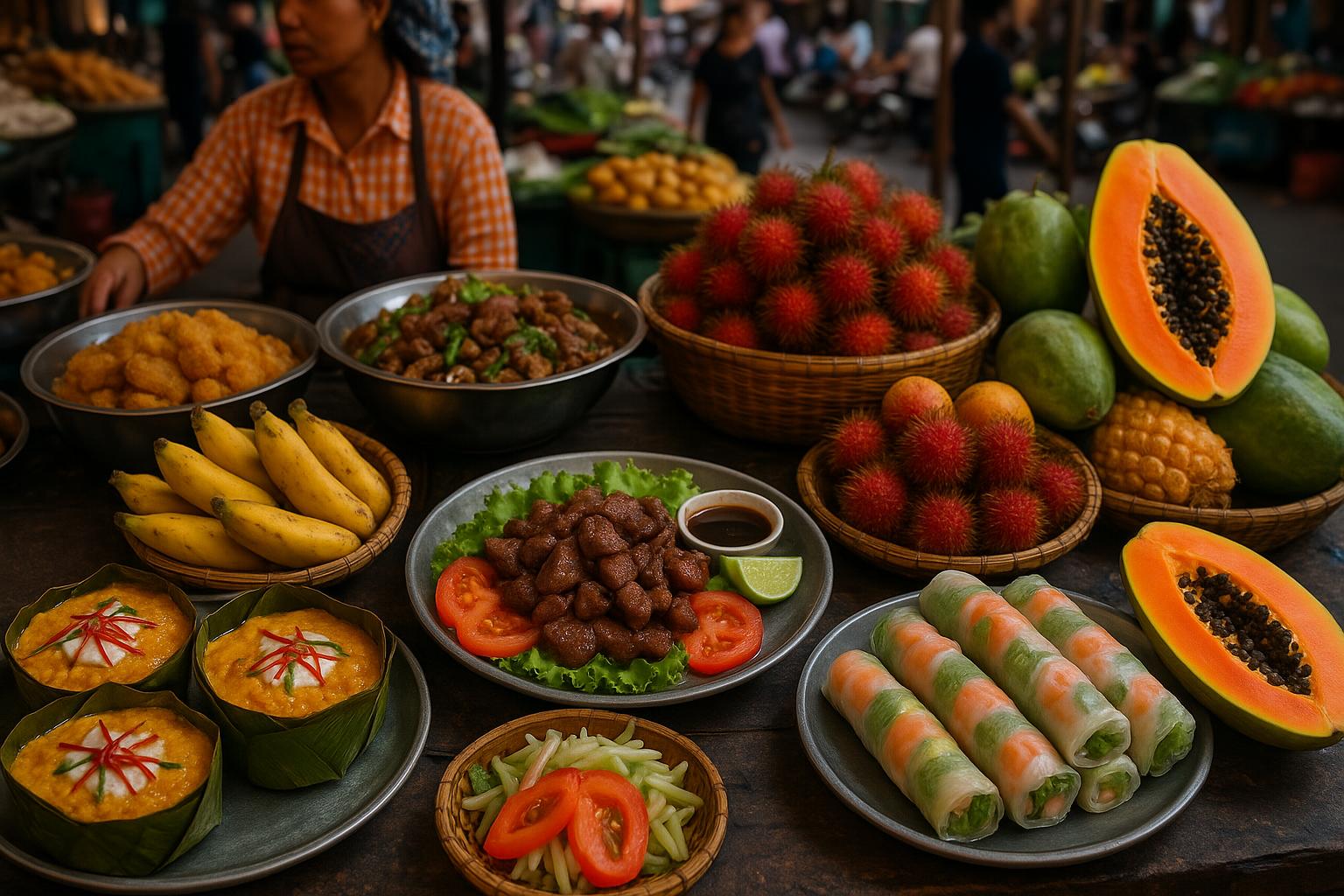Cambodia Food Culture
Discover the rich flavors and traditions of Khmer cuisine
Introduction to Khmer Cuisine
Khmer cuisine represents a harmonious blend of flavors that balances sweet, sour, salty, and bitter tastes in every meal.
Unlike the spicier cuisines of neighboring Thailand and Vietnam, Cambodian food tends to be milder and more aromatic, relying on fresh herbs, fragrant spices, and subtle seasonings.
Key Characteristics
- • Balance: Harmony of four main flavors
- • Fresh Ingredients: Herbs, vegetables, seafood
- • Mild Spicing: Less spicy than neighbors
- • French Influence: Colonial culinary legacy
- • Regional Variations: Coastal and inland specialties
Historical Influences
- • Angkor Period: Ancient Khmer traditions
- • Chinese Immigration: Stir-frying techniques
- • French Colonial: Bread and coffee culture
- • Vietnamese Influence: Shared ingredients
- • Thai Influence: Spices and curry methods

Essential Ingredients & Flavors
Staple Ingredients
Rice Varieties
- • Jasmine Rice: Primary staple
- • Sticky Rice: Desserts and ceremonies
- • Rice Noodles: Soups and stir-fries
- • Rice Paper: Fresh spring rolls
- • Rice Wine: Traditional beverage
Proteins
Main Protein Sources
- • Freshwater Fish: Tonle Sap specialties
- • Seafood: Coastal varieties
- • Pork: Most common meat
- • Chicken: Everyday meals
- • Beef: Special occasions
Herbs & Aromatics
Essential Herbs
- • Lemongrass: Soups and curries
- • Galangal: Aromatic root
- • Kaffir Lime Leaves: Citrusy fragrance
- • Thai Basil: Sweet and spicy
- • Cilantro & Mint: Fresh garnishes
Signature Cambodian Dishes
Amok (National Dish)
Cambodia's most famous dish - a fragrant fish curry steamed in banana leaves
Ingredients
- • Fresh river fish (usually catfish)
- • Coconut milk and cream
- • Kroeung (curry paste)
- • Banana leaves for steaming
- • Thai basil and vegetables
Preparation
- • Fish marinated in curry paste
- • Mixed with coconut milk
- • Steamed in banana leaf cups
- • Garnished with fresh herbs
- • Served with jasmine rice
Traditional Amok Presentation
Sizzling Lok Lak
Lok Lak (Shaking Beef)
Tender beef cubes stir-fried with onions and served with a tangy dipping sauce
Key Features
- • Cubed beef marinated in soy sauce
- • Quick stir-fry technique
- • Served on lettuce bed
- • Lime and black pepper sauce
Accompaniments
- • Steamed jasmine rice
- • Fresh cucumber slices
- • Tomato wedges
- • Fried egg (optional)
Nom Banh Chok (Khmer Noodles)
Traditional breakfast dish of fresh rice noodles with fish-based curry sauce
Components
- • Fresh rice vermicelli noodles
- • Fish curry sauce (samlor kako)
- • Fresh vegetables and herbs
- • Banana flower, cucumber
Cultural Significance
- • Traditional breakfast dish
- • Often sold by street vendors
- • Symbol of Khmer culture
- • Healthy and nutritious
Fresh Noodle Bowl
Street Food Culture

Cambodia's vibrant street food scene offers authentic flavors and affordable dining experiences throughout the country.
From bustling markets to roadside stalls, street food vendors serve fresh, flavorful dishes that represent the heart of Cambodian cuisine.
Popular Street Foods
Num Pang (Cambodian Sandwich)
French baguette with pork, pâté, pickled vegetables, and herbs
Bai Sach Chrouk (Pork and Rice)
Grilled pork over rice with pickled vegetables and soup
Kralan (Bamboo Sticky Rice)
Sticky rice with beans cooked in bamboo tubes
Best Street Food Areas
Phnom Penh
Central Market, Russian Market, Riverside area
Siem Reap
Pub Street area, Old Market, Night Market
Battambang
Central Market, Riverside stalls
Dining Customs & Etiquette
Dining Do's
- Respect elders: Wait for elders to start eating
- Use proper utensils: Spoon and fork, chopsticks for noodles
- Share dishes: Meals are typically communal
- Compliment the cook: Express appreciation for the meal
Dining Don'ts
- Don't use left hand: Use right hand for eating
- Don't make noise: Eat quietly and politely
- Don't point with chopsticks: Keep utensils proper
- Don't rush: Take time to enjoy the meal
Culinary Experiences
Cooking Classes
Learn to prepare traditional Khmer dishes with local chefs
- • Market tours included
- • Hands-on preparation
- • Recipe cards provided
- • Half or full day options
Market Tours
Explore local markets and learn about ingredients
- • Fresh ingredient selection
- • Cultural insights
- • Vendor interactions
- • Photography opportunities
Home Dining
Experience authentic meals with local families
- • Family-style dining
- • Cultural exchange
- • Traditional recipes
- • Personal connections
Regional Specialties
Coastal Region
- • Fresh seafood curries
- • Grilled fish and prawns
- • Coconut-based dishes
- • Tropical fruit desserts
- • Kep crab specialties
Mekong Region
- • River fish preparations
- • Lotus root dishes
- • Water spinach stir-fries
- • Fermented fish sauces
- • Floating market produce
Mountain Region
- • Wild game and herbs
- • Bamboo shoot dishes
- • Indigenous preparations
- • Forest mushrooms
- • Traditional preservation methods
Ready to Taste Cambodia?
Experience the rich flavors of Khmer cuisine during your visit to Cambodia.
Apply for E-Visa Cooking Classes Guide